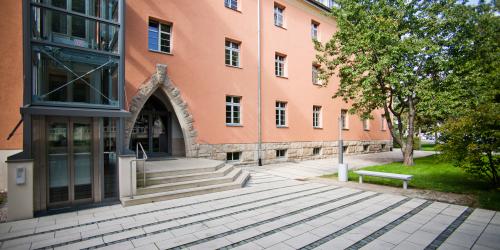
Correction to the climate protest at the Jena-Winzerla cogeneration plant
The reporting on the protest by some climate activists on the heating towers of the Jena power plant created the public impression that the assembly authority of the Jena city administration had "approved" or "tolerated" the actions of the activists and thus legitimized the form of protest. This portrayal does not correspond to the facts. The following article addresses the complexity of assembly law, particularly with regard to a so-called conflict of fundamental rights, and thus creates transparency for administrative action on the ground.
As soon as the five climate activists climbed the towers, but at the latest when they unfurled the first protest banner with the inscription "Gas is over!" at around 7:40 a.m., a form of protest already existed that fulfilled the definition and requirements of a demonstration in the sense of assembly law within the framework of the fundamental rights of freedom of expression under Article 5 of the Basic Law and freedom of assembly under Article 8 of the Basic Law. This rally was not reported to the assembly authorities, contrary to the obligation to notify the authorities as stipulated in the Assembly Act. The power plant operator had therefore also not been notified in advance. It was therefore not possible to prevent the action at the time of the boarding, as there was simply no knowledge of it.
Conversely, the failure to report a demonstration does not provide a legal basis for a ban or immediate dissolution of the demonstration. This would require further circumstances, e.g. the onset of unrest due to acts of violence, which were not present on site. There is no doubt that the form of protest hindered operations on the company premises and there was also a conflict of fundamental rights with the legal interests of third parties. However, the power plant was not in operation anyway for operational reasons, so there were no restrictions on the supply of heat to the citizens of Jena.
In coordination with all responsible parties on site, including the police, the assembly authority and the owner of the domiciliary rights, and after consulting the public prosecutor's office in Gera regarding the criminal offenses involved, the rally was restricted until 10:00 a.m. at around 9:30 a.m.. This restriction was the only measure permitted under assembly law at that time. As the activists did not end their protest at this time, the rally was finally broken up at around 10:00. From this point onwards, there was therefore no longer a regular assembly. Nevertheless, the people did not leave the platform voluntarily and continued the protest.
A subsequent deliberation process led to the conclusion that a forced termination of the action would represent an incalculable and therefore unacceptable risk for the police officers to be deployed, but also for the activists themselves, and was therefore not possible. The decision to leave the activists on the platforms of the heating towers was made on the spot by the police and the owner of the premises. This situation continued until all the activists voluntarily left the chimneys in the evening and were subsequently treated for identification purposes.
